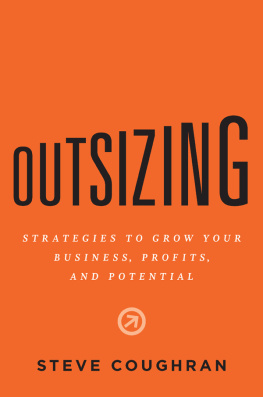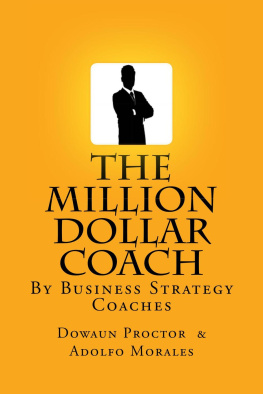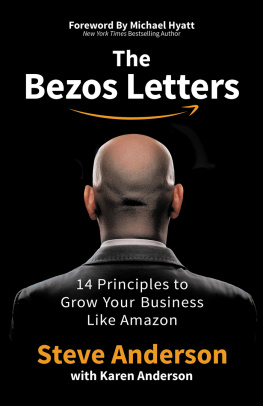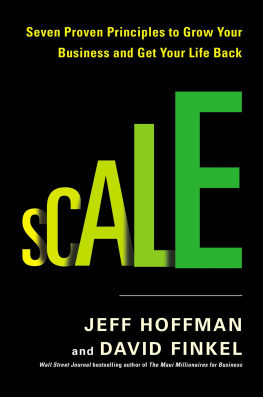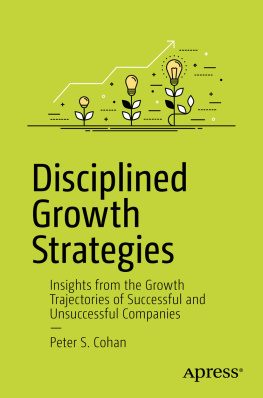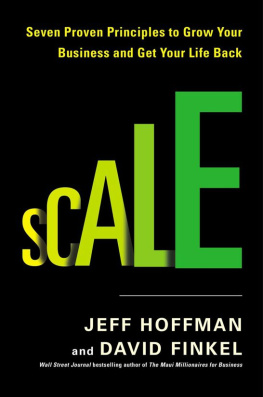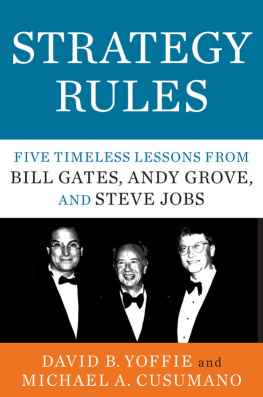OUTSIZING
OUTSIZING
STRATEGIES TO GROW YOUR
BUSINESS, PROFITS,
AND POTENTIAL
STEVE COUGHRAN

This publication is designed to provide accurate and authoritative information in regard to the subject matter covered. It is sold with the understanding that the publisher and author are not engaged in rendering legal, accounting, or other professional services. Nothing herein shall create an attorney-client relationship, and nothing herein shall constitute legal advice or a solicitation to offer legal advice. If legal advice or other expert assistance is required, the services of a competent professional should be sought.
Published by Greenleaf Book Group Press
Austin, Texas
www.gbgpress.com
Copyright 2019 Coltivar Group
All rights reserved.
Thank you for purchasing an authorized edition of this book and for complying with copyright law. No part of this book may be reproduced, stored in a retrieval system, or transmitted by any means, electronic, mechanical, photocopying, recording, or otherwise, without written permission from the copyright holder.
Distributed by Greenleaf Book Group
For ordering information or special discounts for bulk purchases, please contact Greenleaf Book Group at PO Box 91869, Austin, TX 78709, 512.891.6100.
Design and composition by Greenleaf Book Group
Cover design by Greenleaf Book Group
Author photo by Dan Reynolds Photography
Publishers Cataloging-in-Publication data is available.
Print ISBN: 978-1-62634-631-4
eBook ISBN: 978-1-62634-632-1
Part of the Tree Neutral program, which offsets the number of trees consumed in the production and printing of this book by taking proactive steps, such as planting trees in direct proportion to the number of trees used: www.treeneutral.com

Printed in the United States of America on acid-free paper
19 20 21 22 23 24 25 10 9 8 7 6 5 4 3 2 1
First Edition
To my wife, Lalana, and children, Ava and Max, for motivating me to outsize my life every day.
Special thanks to Sarah Dubetz, for her ongoing support in bringing my stories to life.
CONTENTS
INTRODUCTION
D oes your company have a competitive advantage? If you answer yes, youre in the majority. Over the past decade, I have posed this question to thousands of executives and employees in surveys and interviews. Roughly 75 percent of respondents replied in the affirmative. Additionally, 65 percent asserted that their companies have clear, winning strategies. While strategic confidence is widespread, less than 10 percent of participants reported being highly satisfied with their companys strategies, and merely 29 percent stated that they were somewhat satisfied with their strategies.
In reality, no more than 50 percent of companies have a competitive advantagea companys ability to earn above industryaverage economic profits. Additionally, once a company earns a competitive advantage, it must work hard to keep it. Though not all organizations can concurrently be in the top 50 percent, all can design and implement strategies that help them inch closer to the top tier. Every organization has the potential to outsizeto outgrow limitations, challenge conventional wisdom, and achieve extraordinary results.
Over the past decade, I have worked with companies of all sizes from different industries. I have seen winning strategies catapult companies to new heights of success. I have also seen poor decisions put employees out of work and rob business owners of their life savings. Strategy underpins the future of business. The rampant disconnect between plans and results disables companies from capturing the true value that arises from getting strategy right.
As I discuss throughout this book, my thoughts and research are largely inspired by the people whom I have worked with and my observations of how organizations have adapted (or failed to adjust) to the nuances of our dynamic business environment. In my experience as a business owner, management consultant, and CFO, I have witnessed companies with great capabilities and advantages deteriorate under competitive pressure. I have also seen organizations conform to the modern economy with ease and agility, driving record-breaking success with strategic prowess.
The stark disparities in organizational performance emphasize the necessity of strategy. While our new economy presents challenges to those who fail to change, it exposes uncapped opportunity for those whose strategies embrace change. Recent social, political, and digital shifts are reshaping the ways that businesses win.
In our current business environment, nearly 67 percent of strategies fail.
The impacts of negative strategy are not contained to the organization. I have witnessed the personal lives of business leaders crumble in the face of a declining business. A failing company can eat away at marriages, family relationships, and mental and physical well-being. Despite the disastrous side effects of detrimental strategy, many leaders prefer the shelter of false confidence. Some would rather believe that their companies have a competitive advantage than admit their need for a time-, money-, and energy-consuming turnaround. Many leaders avoid focusing on strategy because it requires the most patience, diligence, and hard work of any business activity.
Businesses today are operating in the dark. Widespread misunderstanding and apathy toward strategy are unduly exposing businesses to risk. Leaders obscured, idealistic views of their companies are causing them to accept mediocrity, leaving significant opportunity on the table.
To effectively design and implement an outsized strategy, one that will encourage them to eliminate barriers and push beyond their boundaries, employees must educate themselves on what strategy looks like in the new economy. As the world continues to present new levers of influence and uncertainty, strategy is more important now than ever. To succeed in our modern business environment, companies must become transparent learning organizations.
A robust strategy design requires the right balance of art and science. Art ensures that the strategy listens, observes, and empathizes to design exceptional experiences that help customers progress toward their goals. It allows companies to think outside the box, empowering innovation and disruption. It welcomes us to an energizing space where we can challenge conventional wisdom, sparking creativity and creation. Science provides companies with a framework to define strategic problems, craft hypotheses, evaluate options, analyze data, and draw conclusions. Too much of one without the other fundamentally flaws plans, leaving them incomplete.
Strategy is more than just design, however. The tactics that allow a company to win are rooted in strong execution. Most executives recognize the need for both art and science but exclude the critical executional ingredientdiscipline. Many companies I encounter are skilled in the art of strategy. Leaders craft ambitious plans to capture greater market share, expand capacity, or develop new capabilities. These companies revel in the strategic daydreaming. However, after the honeymoon phase of the strategy subsides and implementation begins, teams lose momentum, and execution falls flat.
Oftentimes, employees unite around the possibilities and promise of a bright future, but they lack a realistic outlook and a process to vet decisions. Other organizations are without the willpower and follow-through to ensure ongoing attention to the plan. Some approach implementation without formalized structures or governance. These companies struggle with undefined decision rights and unassigned responsibility. Finally, many companies ignore or dont know how to adapt to the changing nature of the market.

